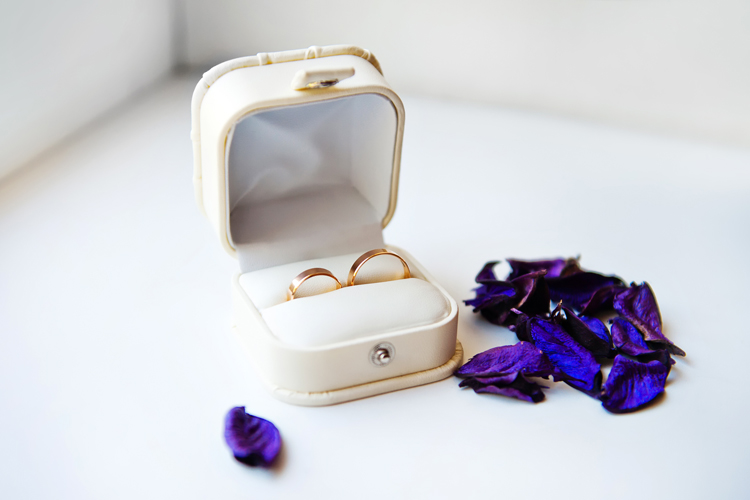Jewelry has always been a part of human history, from the earliest days of civilization to the present.
From ancient Egyptians to modern-day jewelers, people have been captivated by the beauty and symbolism of precious stones and metals.
From engagement rings to necklaces and earrings, jewelry has played a significant role in our culture and society throughout the ages.
Here are some interesting, curious facts that you might not know about jewelry and its rich history.
- Jewelry has been used for thousands of years for both decorative and symbolic purposes.
- The oldest known jewelry pieces are 100,000-year-old beads made from Nassarius shells.
- Gold is one of the oldest and most popular materials used in jewelry making, with the use of the metal dating back to ancient civilizations such as Egypt and Mesopotamia.
- Throughout history, precious stones and gems have been associated with various meanings and symbolism. For example, the ancient Egyptians believed that certain stones had healing powers.
- In ancient times, only royalty and the wealthy could afford to wear precious jewelry.
- The invention of the engagement ring is credited to the ancient Egyptians, who believed that a ring worn on the fourth finger of the left hand had a vein that ran directly to the heart.
- In ancient Rome, it was traditional for a groom to give his bride a ring made of iron as a symbol of their binding agreement.
- Pearls were highly valued in ancient civilizations and were often given as gifts to royalty.
- The oldest known gold artifacts are from the graves of the Varna Necropolis in Bulgaria, dating back to around 4500 BC.
- The use of gemstones in jewelry can be traced back to prehistoric times.
- The ancient Egyptians believed that amulets and talismans worn around the neck or on the body could protect the wearer from harm and bring good luck.
- During the 18th and 19th centuries, it was fashionable for women in Europe and America to wear mourning jewelry made of jet, a black mineral, as a symbol of their grief after the loss of a loved one.
- In ancient Greece, rings were worn on the fourth finger of the left hand because it was believed that this finger had a vein, the “vena amoris” or the “vein of love,” that ran directly to the heart.
- Some ancient cultures would bury their dead wearing jewelry in order to provide them with wealth and status in the afterlife.
- In the Middle Ages, the Catholic Church banned the wearing of jewelry made from precious stones, such as diamonds, because they were considered too decadent.
- The art of enameling, or coating metal with a layer of colored glass, has been used in jewelry making for thousands of years, with examples dating back to ancient Egypt.
- The first known use of pearls in jewelry can be traced back to ancient civilizations such as Greece and Rome.
- In ancient China, jade was considered more valuable than gold and was used to create intricate carvings and jewelry.
- The use of enamel in jewelry made a comeback during the Art Nouveau movement of the late 19th and early 20th centuries, which featured flowing lines and natural forms.
- Some ancient cultures, such as the Aztecs, believed that turquoise had spiritual powers and wore it in jewelry as a talisman for protection.
- In ancient cultures, gold was often considered to be a symbol of the sun and was believed to have healing powers.
- In ancient Egypt, both men and women wore earrings as a sign of wealth and status.
- The ancient Egyptians were known for their skillful use of granulation, a technique for attaching tiny beads of gold to a surface to create intricate patterns.
- The ancient Etruscans of Italy, who flourished between the 8th and 3rd centuries BCE, were skilled goldsmiths, and their jewelry featured intricate designs and granulation.
- During the Renaissance, the art of enameling was revived and became a popular method for decorating jewelry.
- In the 18th century, the art of cameo carving reached its height of popularity. Cameos were often used to create intricate portraits of famous figures, such as Roman emperors, on rings, and other jewelry items.
- The art of engraving, which involves carving intricate designs into metal, has been used in jewelry making for centuries.
- The use of pearls in jewelry in ancient civilizations such as Greece and Rome was considered a symbol of wealth and luxury.
- Many cultures have traditional methods of jewelry making passed down through generations, such as the art of filigree, which involves twisting and bending fine wire to create delicate patterns, which is often seen in jewelry from the Middle East and Mediterranean regions.
- Jewelry is not only an art but also has a scientific aspect to it – the ancient Egyptians knew how to alloy copper and tin to make bronze, which is harder and stronger than copper, a technique still used today for some kinds of jewelry.




